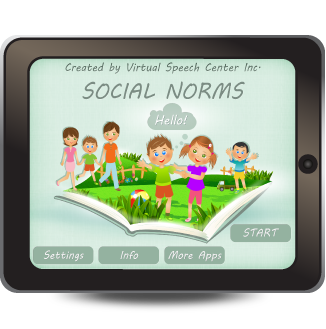 As a speech language pathologist (SLP) who works in an outpatient psychiatric school-based setting, I frequently review incoming students previous speech language evaluation reports. There are a number of trends I see in these reports which I have written about in the past as well as planned on writing about in the future.
As a speech language pathologist (SLP) who works in an outpatient psychiatric school-based setting, I frequently review incoming students previous speech language evaluation reports. There are a number of trends I see in these reports which I have written about in the past as well as planned on writing about in the future.
For example, in the past I wrote about my concern regarding the lack of adequate or even cursory social communication assessments for students with documented psychiatric impairments and emotional behavioral deficits.
This leads many professionals to do the following:
a. Miss vital assessment elements which denies students appropriate school based services and
b. Assume that the displayed behavioral challenges are mere results of misbehaving.
Today however I wanted express my thoughts regarding another disturbing trend I see in numerous incoming speech-language reports in both outpatient school/hospital setting as well as in private practice – and that is lack of background information in the students assessment reports.
Despite its key role in assessment, this section is frequently left bare. Most of the time it contains only the information regarding the students age and grade levels as well as the reasons for the referral (e.g., initial evaluation, triennial evaluation). Some of the better reports will include cursory mention of the student’s developmental milestones but most of the time information will be sorely lacking.
Clearly this problem is not just prevalent in my incoming assessment reports. I frequently see manifestations of it in a variety of speech pathology related social media forums such as Facebook. Someone will pose a question regarding how to distinguish a _____ from ____ (e.g., language difference vs. language disorder, behavioral noncompliance vs. social communication deficits, etc.) yet when they’re questioned further many SLPs will admit that they are lacking any/most information regarding the students background history.
When questioned regarding the lack of this information, many SLPs get defensive. They cite a variety of reasons such as lack of parental involvement (“I can’t reach the parents”), lack of access to records (“it’s a privacy issue”), division of labor (e.g., “it’s the social worker’s responsibility and not mine to obtain this information”) as well as other justifications why this information is lacking.

Now, I don’t know about you, but one of my earliest memories of the ‘diagnostics’ class in graduate school involved collecting data and writing comprehensive ‘Background Information’ section of the report. I still remember multiple professors imparting upon me the vital importance is this section plays in the student’s evaluation report.
Indeed, many years later, I clearly see its vital role in assessment. Unearthing the student’s family history, developmental milestones, medical/surgical history, as well as history of past therapies is frequently the key to a successful diagnosis and appropriate provision of therapy services. This is the information that frequently plays a vital role in subsequent referrals of “mystery” cases to relevant health professionals as well as often leads to resolution of particularly complicated diagnostic puzzles.
Of course I understand that frequently there are legitimate barriers to obtaining this information. However, I also know that if one digs deep enough one will frequently find the information they’re seeking despite the barriers. To illustrate, at the psychiatric hospital level where I work, I frequently encounter a number of barriers to accessing the student’s background information during the assessment process. This may include parental language/education barrier, parental absence, Division of Child Protective Services involvement, etc. Yet I always try to ensure that my reports contain all the background information that I’m able to unearth because I know how vitally important it is for the student in question.
In the past I have been able to use the student’s background information to make important discoveries, which were otherwise missed by other health professionals. This included undocumented history of traumatic brain injuries, history of language and literacy disabilities in the family, history of genetic disorders and/or intellectual disabilities in the family, history of maternal alcohol abuse during pregnancy, and much much more.
So what do I consider to be an adequate Background History section of the assessment report?
For starters, the basics, of course.
I begin by stating the child’s age and grade levels, who referred the child (and for what reason), as well as whether the child previously received any form of speech language assessment/therapy services in the past.
If I am preforming a reassessment (especially if it happens shortly after the last assessment took place) I provide a clear justification why the present reassessment is taking place. Here is an actual excerpt from one of my reevaluation reports. “Despite receiving average language scores on his _______ speech language testing which resulted in the recommendation for speech therapy only, upon his admission to ______, student was referred for a language reassessment in _____, by the classroom staff who expressed significant concerns regarding validity and reliability of past speech and language testing on the ground of the student’s persistent “obvious” listening comprehension and verbal expression deficits.”
For those of you in need of further justification I’ve created a brief list of reasons why a reassessment, closely following recent testing may be needed.
- SLP/Parent feels additional testing is needed to create comprehensive goals for child.
- Previous testing was inadequate. Here it’s very important to provide comprehensive rationale and list the reasons for it.
- A reevaluation was requested due to third party concerns (e.g., psychiatrist, psychologist, etc.)
Secondly, it is important to document all relevant medical history, which includes: prenatal, perinatal, and early childhood diseases, surgical interventions and incidents. It is important to note that if a child has a long standing history of documented psychiatric difficulties, you may want to separate these sections and describe psychiatric history/diagnoses following the section that details the onset of the child’s emotional and behavioral deficits.

Let us now move on to the child’s developmental history, which should include, gross/fine motor, speech/ language milestones, and well as cognitive and socioemotional functioning. This is a section where I typically add information regarding any early intervention services which may have been provided to the child prior to the age of three.
In my next section I discuss the child’s academic functioning to date. Here I mention whether the student qualified for a preschool disabled eligibility category and received services from the age of 3+. I also discuss their educational classification (if one exists), briefly mention the results of previous most recent cognitive and educational testing (if available) as well as mention any academic struggles (if applicable).
After that I move on to the child’s psychiatric history. I briefly document when did the emotional behavioral problems first arose, and what had been done about them to date (out of district placements, variety of psychiatric services, etc.) Here I also document the student’s most recent psychiatric diagnoses (if available) and mention any medication they may be currently on (applicable due to the effect of psychiatric medications on language and memory skills).
The following section is perhaps the most important one in the report. It is the family’s history of genetic disorders, psychiatric impairments, special education placements, as well as language, learning, and literacy deficits. This section plays a vital importance in my determination of the contributions to the student’s language difficulties as well as guides my assessment recommendations in the presence of borderline assessment results.
I finish this section by briefly discussing the student’s Family Composition as well as Language Knowledge and Use.
I discuss family composition due to several factors. For example, lack of consistent caregivers, prolonged absence of parental figures, as well as presence of a variety of people in the home can serve as significant stressor for children with psychiatric impairments and learning difficulties. As a result of this information is pertinent to the report especially when it comes to figuring out the antecedents for the child’s behavior fluctuation on daily basis.

Language knowledge and use is particularly relevant to culturally and linguistically diverse children. It is very important to understand what languages does the child understand and use at home and at school as well as what do the parents think about the child’s language abilities in both languages. These factors will guide my decision making process regarding what type of assessments would be most relevant for this child.
So there you have it. This is the information I include in the background history section of every single one of my reports. I believe that this information contributes to the making of the appropriate and accurate diagnosis of the child’s difficulties.
Please don’t get me wrong. This information is hugely relevant for all students that we SLPs are assessing.
However, the above is especially relevant for such vulnerable populations as children with emotional and behavioral disturbances, whose struggle with social communication is frequently misinterpreted as “it’s just behavior“. As a result, they are frequently denied social communication therapy services, which ultimately leads to denial of Free Appropriate Public Education (FAPE) that they are entitled to.
Let us ensure that this does not happen by doing all that we can to endure that the student receives a fair assessment, correct diagnosis, and can have access to the best classroom placement, appropriate accommodations and modifications as well as targeted and relevant therapeutic services. And the first step of that process begins with obtaining a detailed background history!
Helpful Resources:
- Pediatric History Questionnaire
- The Checklists Bundle
- Introduction to Social Pragmatic Language Disorders
- Recognizing the Warning Signs of Social Emotional Difficulties in Language Impaired Toddlers and Preschoolers
- Social Pragmatic Deficits Checklist for Preschool Children
- Social Pragmatic Deficits Checklist for School Aged Children
- Social Pragmatic Assessment and Treatment Bundle
- Narrative Assessment Bundle
- Psychiatric Disorders Bundle
- Fetal Alcohol Spectrum Disorders Assessment and Treatment Bundle
- Assessing Social Pragmatic Skills of School Aged Children
- Behavior Management Strategies for Speech Language Pathologists
- Effective Behavior Management Techniques for Parents and Professionals
- Treatment of Social Pragmatic Deficits in School Aged Children
- Social Pragmatic Language Activity Pack
- Social Pragmatic Language: Multiple Interpretations Therapy Activity
- The Role of Frontal Lobe in Speech and Language Functions
- Executive Function Impairments in At-Risk Pediatric Populations
- Differential Diagnosis of ADHD in Speech Language Pathology
- Speech Language Assessment of Older Internationally Adopted Children
- General Assessment and Treatment Start Up Bundle
- Multicultural Assessment Bundle










 A case for early speech-language assessments of adopted children in the child’s birth language.
A case for early speech-language assessments of adopted children in the child’s birth language. A few days ago I was asked by my higher-ups for a second opinion on a consult regarding a psychological evaluation on an 11-year-old boy, which was depicting a certain pattern of deficits without a reasonable justification as to why they were occurring. I had a working hypothesis but needed more evidence to turn it into a viable theory. So I set out to collect more evidence by interviewing a few ancillary professionals who were providing therapy services to the student.
A few days ago I was asked by my higher-ups for a second opinion on a consult regarding a psychological evaluation on an 11-year-old boy, which was depicting a certain pattern of deficits without a reasonable justification as to why they were occurring. I had a working hypothesis but needed more evidence to turn it into a viable theory. So I set out to collect more evidence by interviewing a few ancillary professionals who were providing therapy services to the student.



 Today I am reviewing “Social Norms” a brand new app developed by the Virtual Speech Center to improve social skills in children with autism spectrum disorders.
Today I am reviewing “Social Norms” a brand new app developed by the Virtual Speech Center to improve social skills in children with autism spectrum disorders.  Today I’d like to officially introduce a new
Today I’d like to officially introduce a new 